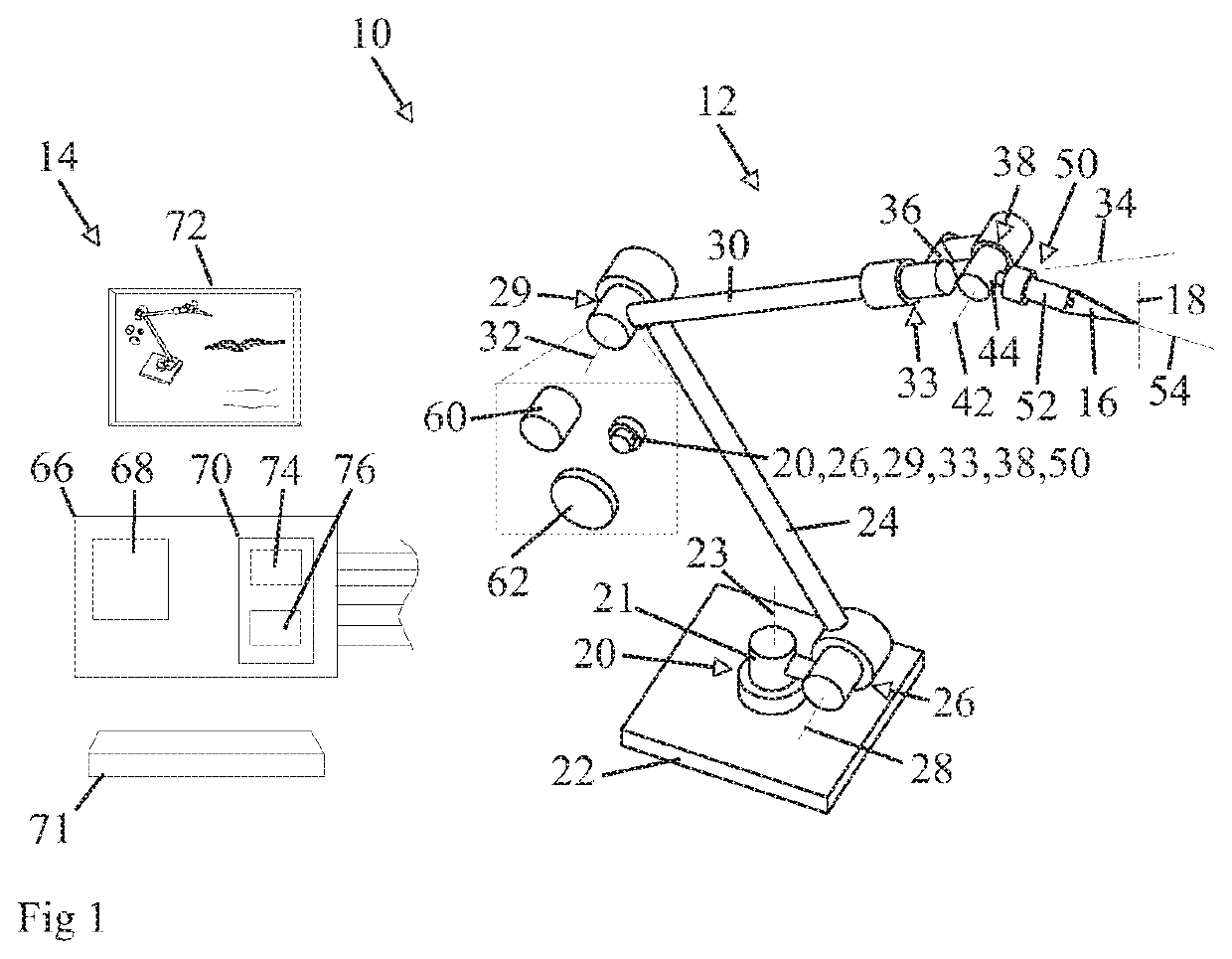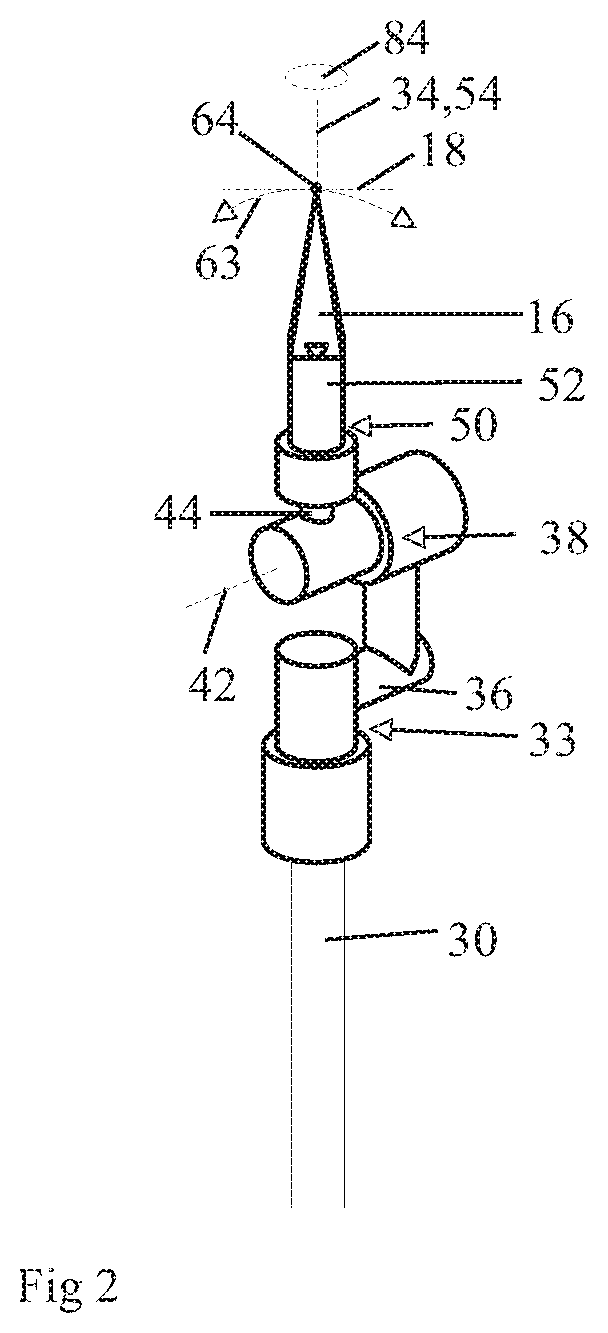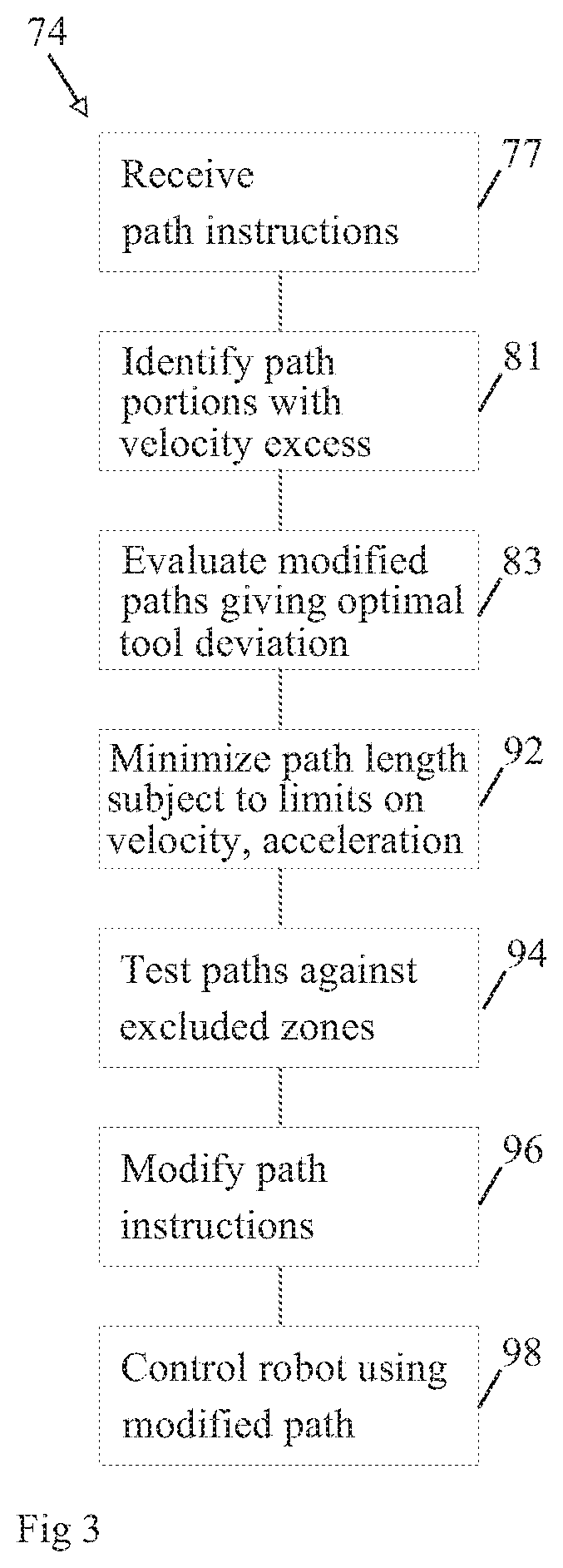Path-Modifying Control System Managing Robot Singularities
a control system and robot technology, applied in the field of robot mechanisms, can solve the problems of reducing the reducing the degree of freedom of the robot, and inverse kinematics problems,
- Summary
- Abstract
- Description
- Claims
- Application Information
AI Technical Summary
Benefits of technology
Problems solved by technology
Method used
Image
Examples
embodiment 1
[0198]This single virtual-displacement procedure is applied in the Preferred Embodiment 1) over the course of the singularity locating maneuver to maintain the minimum tool deviation θ7, 2) when solving for the point giving the least-maximum deviation on the adjusted path of a spherical wrist, and 3) in order to pass through the least-maximum point upon executing the singularity avoidance maneuver
[0199]With an offset wrist, finding the least-maximum point on the adjusted path requires guiding joints 4, 5 and 6 with joints 1, 2, 3, 7, 8 and 9 passive to meet rate CV7(t)=0 for each of the constant active-joint rates CV4=1, CV5=1 and CV6p=1. Applying Eq. (A12) to these three virtual displacements having rate vectors CV,r for 1≤r≤3 gives the linear system of equations
[CγV7,1,1CγV7,2,1CγV7,3,1CγV7,1,2CγV7,2CγV7,3,2CγV7,1,3CγV7,2,3CγV7,3,3][γ1[k]γ2[k]γ3[k]]+(k+1)[B1B2B3]=0Br=CβV7,r[k+1]-CV7,r[k+1],1≤r≤3(A14)
[0200]For example, constant coefficient CγV7,3,1 at the end of the first row in E...
case b
[0226]In case b), both the quadratic and the bounding polynomial f̆p(x) are initially of upward slope and downward curvature. Both functions will continue to increase until they reach their respective slope inflection points. Hence f̆p(x) has no real root until after its inflection Between its inflection point and the positive-real root of the downwardly curved quadratic, f̆p(x) has one real root.
[0227]In case e) where both functions are initially of positive slope and upward curvature, the bounding polynomial f̆p(x) will continue to increase until it passes first its curvature inflection followed by its slope inflection. After that, f̆p(x) is monotone down if f̆3,p(x) has at least one non-zero coefficient. It follows that f̆p(x) has only one real root on the positive real line. As the quadratic has no real root on that interval, f̆p(x) would need to be sampled at increasing intervals to determine where it changes sign, marking the upper limit on a single real root. This condition ...
PUM
 Login to View More
Login to View More Abstract
Description
Claims
Application Information
 Login to View More
Login to View More - R&D
- Intellectual Property
- Life Sciences
- Materials
- Tech Scout
- Unparalleled Data Quality
- Higher Quality Content
- 60% Fewer Hallucinations
Browse by: Latest US Patents, China's latest patents, Technical Efficacy Thesaurus, Application Domain, Technology Topic, Popular Technical Reports.
© 2025 PatSnap. All rights reserved.Legal|Privacy policy|Modern Slavery Act Transparency Statement|Sitemap|About US| Contact US: help@patsnap.com



